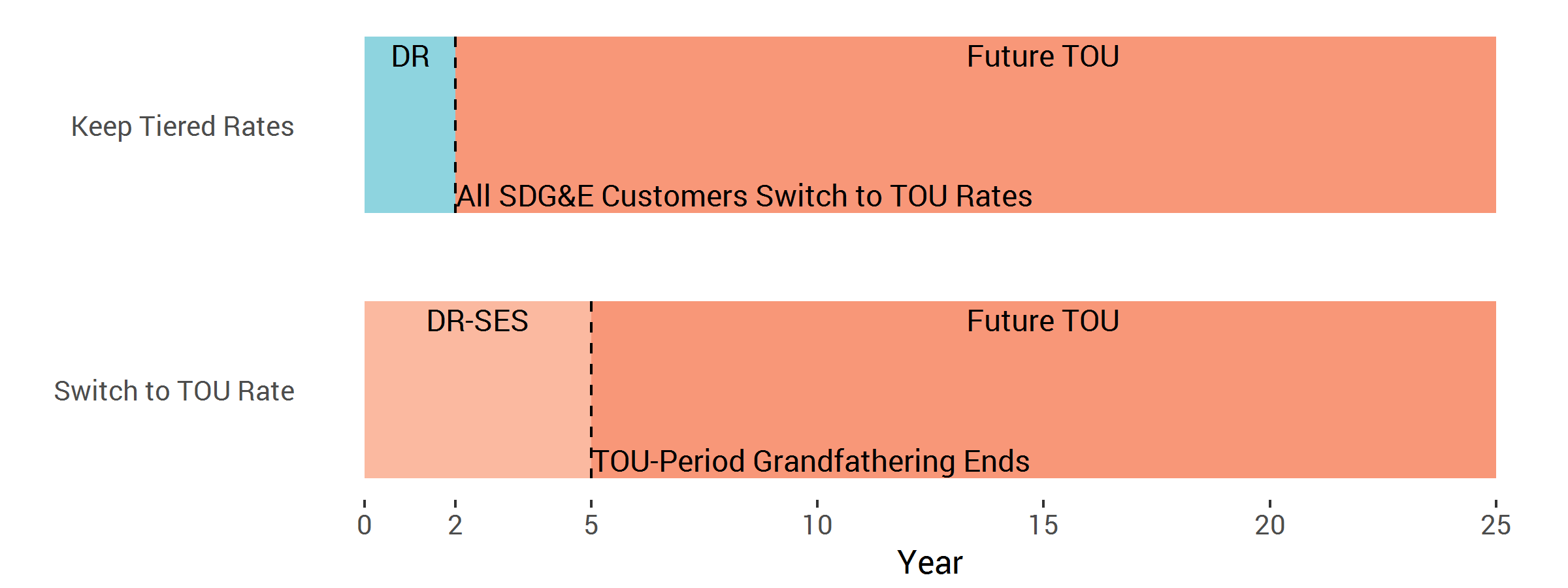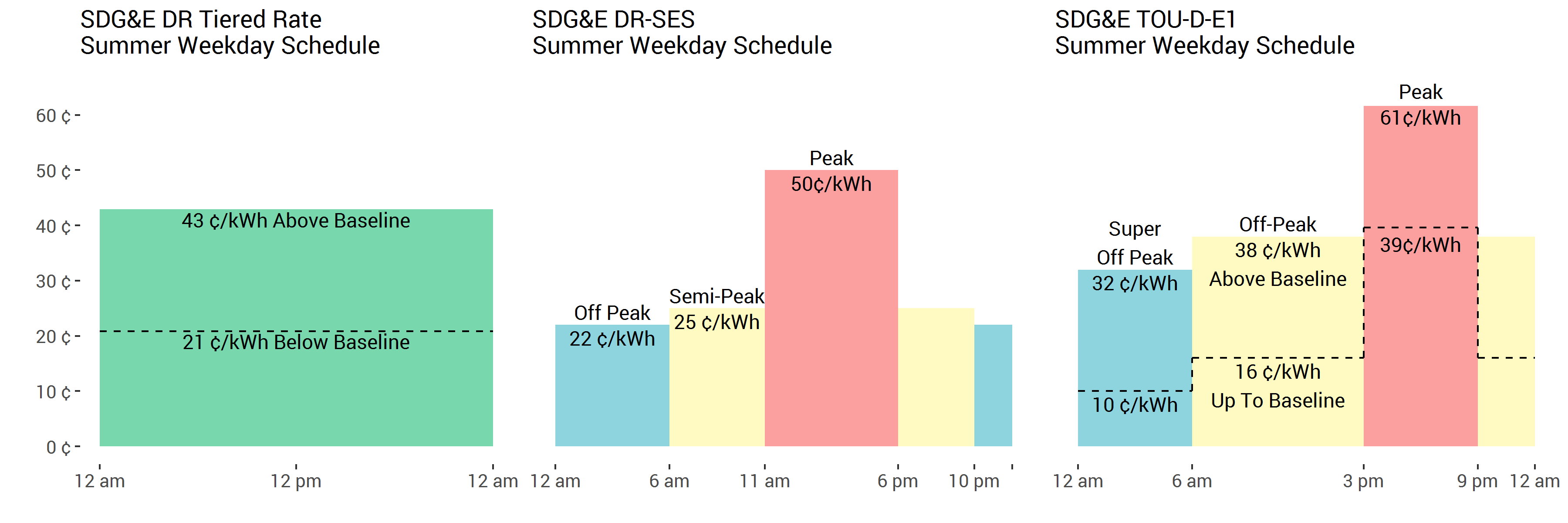If you’re a solar installer in the San Diego area, there’s an upcoming deadline this week that you should be highlighting for your customers because it may make a big difference in their savings from solar.
Starting in 2019, San Diego Gas & Electric (SDG&E) will require time-of-use (TOU) rates for all customers. These new TOU rates will be less favorable to solar customers than SDG&E’s current TOU rates due to peak pricing periods later in the day—3pm to 9pm—when solar energy production is lower. This means customers will earn less for exporting excess energy and have to pay more for evening energy purchases.
However, customers who switch to SDG&E’s current TOU rate by this Friday, July 28th, will be able to retain their existing TOU rate for the next five years, rather than having to immediately switch to the less favorable TOU rates when they are rolled out two years from now.
Who does this deadline affect?
This deadline is relevant to solar customers of SDG&E who are currently on tiered rates (such as Schedule DR ), rather than TOU rates. Many SDG&E solar customers with net metering have elected to remain on tiered rates 1 because they offer lower prices per kilowatt hour up to a certain baseline level of consumption. With this deadline approaching, the two options for these customers are to:
- keep their existing tiered rate for two years, after which the rate will close and the customer will have to switch to the afternoon-peaked TOU rate, or
- switch to a TOU rate (such as DR-SES ) now and keep it for 5 years before switching.
So what’s the best option? We used Aurora’s financial analysis features to shed some light on this question.

What action should solar customers take?
We analyzed five designs in Aurora with uploaded interval (Green Button) data. Among these, all five designs benefitted from switching immediately to schedule DR-SES. In fact, DR-SES usually offers a lower bill for most customers with over 50% of their energy consumption offset by solar, thanks to a combination of high rates during the day, when houses are producing the most solar energy, and lower rates at night.
This makes sense when looking at how the rate structures are broken down. While keeping the tiered (DR) rate offers lower cost electricity since solar customers tend to stay within their baseline allowance, the current TOU rate (DR-SES) offers a massive amount of credits for energy pumped out of the house during the middle of the day—a whopping additional 30 cents per kWh!

Meanwhile, the future TOU rate pushes the peak costs to later in the day when the customer is more likely to be buying electricity from the grid. If we look at a customer’s utility bills under an approximation of the future TOU rate2 with peak hours from 3pm-9pm (based on SDG&E’s TOU-DR-E1 rate ), we find that most customers end up paying more than their existing tiered schedule. If a customer were to stay on a tiered rate and have to switch to a rate like TOU-DR-E1 in two years, they will see an increase to their bill.
When will SDG&E’s future TOU rates be favorable?
There are some instances where SDG&E’s future TOU rate (exemplified by TOU-DR-E1) is actually favorable. This happens in situations where the customer has a high energy usage during the middle of the day, which makes both SDG&E’s current TOU rates (DR-SES and TOU-DR) unfavorable, and an energy offset percentage of less than 50%, which means that they can’t offset expensive parts of a tiered rate schedule. So if you’re running a home office or are blasting the AC away, you might actually see your bill drop.
Since the upcoming 2019 rate change will actually be beneficial for these customers, they don’t need to worry about enrolling in the current TOU rate by Friday’s deadline. In fact, they might even want to opt-in to TOU-DR-E1 before 2019 to take advantage of savings.
What does this mean?
It’s clear that solar customers in the San Diego region should think carefully about whether to enroll in a TOU rate by Friday in order to maximize their savings from solar over the next five years. As an installer in the region, being able to advise your customer and demonstrate their potential saving from a particular rate will help them maximize the value of their solar investment. Solar software with financial analysis capabilities can be very helpful in assessing what rate will be most beneficial in a particular customer’s case.
Key Takeaways:
- Starting in 2019, time-of-use rates (TOU) will become mandatory for all San Diego Gas & Electric (SDG&E) customers. These new TOU rates will be less favorable to solar customers than current TOU rates, due to peak pricing periods later in the day.
- Solar customers currently enrolled in a tiered rate who switch to SDG&E’s current TOU rate by this Friday, July 28th, will be able to retain their existing TOU rate for the next five years. In most cases this will be financially advantageous.
- There are some instances where SDG&E’s future TOU rates will be favorable, particularly when the customer has a high energy usage during the middle of the day and an energy offset percentage of less than 50%.
- Solar software with financial analysis capabilities, like Aurora, can help determine the best course of action for a particular customer. Customers can also call SDG&E at 1-800-411-SDGE (7343) and ask to speak to a Net Metering or Solar Specialist for more advice.
Logistical Notes:
- Friday’s deadline is the deadline for customers to request to switch to an existing TOU rate, so there is still time to make the switch.
- To make the switch, customers should visit to this SDG&E Webpage: https://www.sdge.com/clean-energy/overview/overview-nem-rates and fill out the Optional Rate DR SES Authorization Form at the bottom of the page and fax it to SDG&E.
- Customers should also call SDG&E’s Customer Contact Center at 1-800-411-SDGE (7343) and ask to speak to a Net Metering or Solar Specialist.
- This case only applies to customers who installed solar before June 2016; customers who added solar after that point were required to enroll in TOU rates under California’s new net metering policy, commonly known as NEM 2.0. These customers, on Schedule NEM-ST (NEM 2.0), will be able to keep their existing TOU rate until 5 years after their system came online. ↩
- Because the final rate details have not been released, to calculate how customers’ bills will be impacted by the future TOU rate we used a modified version of SDG&E’s rate “TOU-DR-E1.” This experimental rate was rolled out by SDG&E as a pilot program to inform the development of the mandatory TOU rate for residential customers, so it provides a good indicator of what the eventual rate will look like. However, SDG&E has indicated that peak hours under the final rate are expected to be between 3pm-9pm, so we created a custom utility rate in Aurora’s software with the same parameters as TOU-DR-E1 but adjusted peak hours. ↩